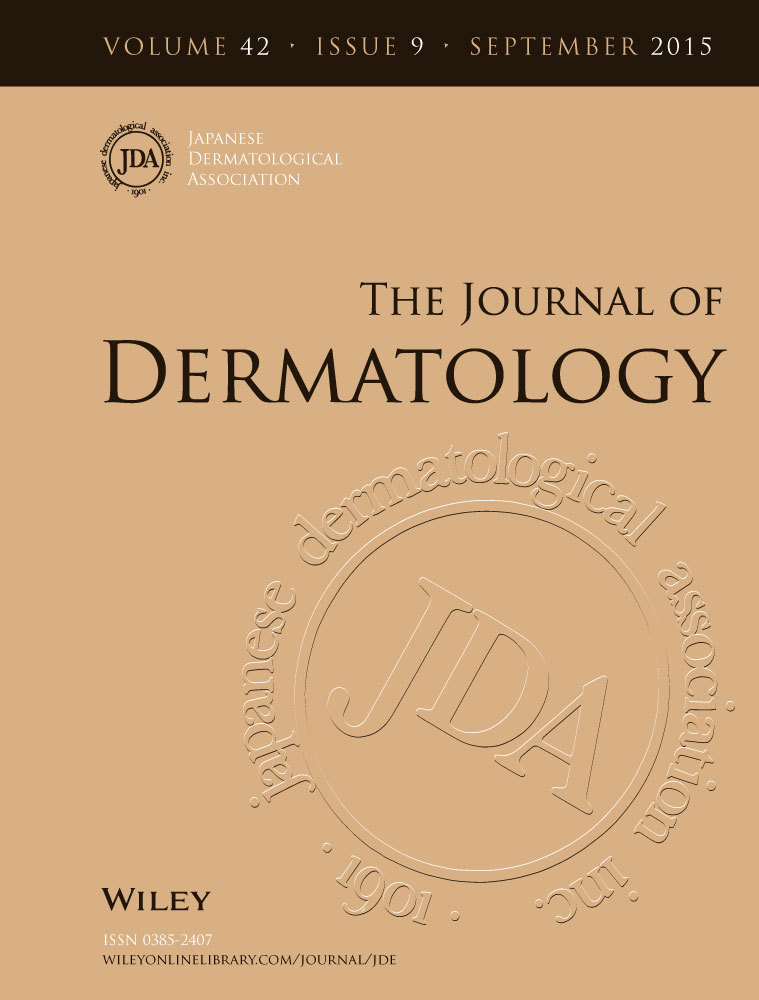Familial Mediterranean fever variant with repeated atypical skin eruptions
Abstract
Familial Mediterranean fever (FMF) is characterized by self-limited bouts of fever and polyserositis. Skin involvement is not common in FMF, and erysipelas-like erythema is found to be the most frequent skin eruption which is often accompanied by arthritis and fever, and disappears within 12–72 h. We report a 40-year-old Japanese woman who presented with a 2-year history of recurrent fever with general fatigue, polyarthralgia and transient maculopapular eruptions on her lower extremities and trunk. The histological findings of the maculopapular eruption showed lymphocyte infiltration around the capillaries in the entire dermis. Mutation analysis showed a heterozygous E148Q-P369S mutation of MEFV. These findings suggested a diagnosis of late-onset FMF variant with atypical skin eruptions. The patient was successfully treated with colchicine. Thus, we should pay attention to repeated atypical skin eruptions for the early detection of atypical FMF.




